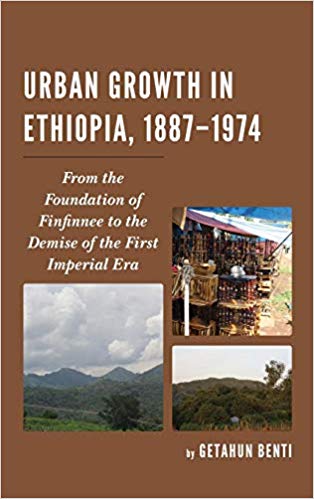
Shipped From Country United Kingdom
Sellers ID Ingram B - 555
Media Condition New
Sleeve Condition New
Question-Contact Seller
Comments
Pages Count - 00234. Binding type - Hardcover. This item is NOT Returnable.
Description
This book highlights the positive achievements that Imperial Ethiopia made in its journey towards urbanization into the modern era, and undertakes a critical assessment of the economic, political, and social impediments that prevented the country from transitioning into a truly fully fledged modern urbanization. It provides a comprehensive history of the growth of towns between 1887 and 1974. It is organized chronologically, regionally, and thematically, divided into three distinct time periods during which Ethiopian towns saw progresses and exposures to limited modern urban features.
First, during 1887-1936, the country saw the creation and growth of a national capital (1887) that coordinated the country's economic and political activities and facilitated the growth of other towns in the empire. It introduced new towns, the railway, modern schools, and health centers. Rudimentary factories were established in Addis Ababa and Dire Dawa, along with motor cars and modern roads, which increased trade between cities.
The next era was the Italian occupation from 1936-1941, which shook the pre-existing process of urban growth by introducing a modern European style urbanization system. Ethiopian cities saw a qualitatively different way of urban growth in both form and content. The Italians introduced modern economic and physical planning, administration, and internal organization.
People were introduced to modern life in urban areas, exposed to modern wage labor system, and thus moved to towns to take advantage of the opportunity. The Italian occupation left behind many features of modern urbanization, and this influenced population exposed to modern consumptive tastes was determined to retain what the Italians introduced. Finally, the post-Italian period saw a new era of urban growth.
Due to economic and organizational problems resulting from destructions caused by the war, the process of urban growth was slowed down in the early 1940s. Although the government did not introduce a clear urban policy in the immediate aftermath of the Second World War, towns continued to grow progressively from the early 1950s to 1974.
When possible we will add details of the items we are selling to help buyers know what is included in the item for sale. The details are provided automatically from our central master database and can sometimes be wrong. Books are released in many editions and variations, such as standard edition, re-issue, not for sale, promotional, special edition, limited edition, and many other editions and versions. The Book you receive could be any of these editions or variations. If you are looking for a specific edition or version please contact us to verify what we are selling. Gift Ideas Hours of Service This is new and unplayed New unplayed
This is a great Christmas gift idea.
We have many warehouses, some of the warehouses process orders seven days a week, but the Administration Support Staff are located at a head office location, outside of the warehouses, and typically work only Monday to Friday.
Items sold are based on the Goldmine Record Grading system, an industry standard for grading records.'
0 Songs
